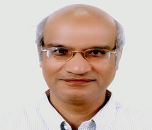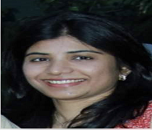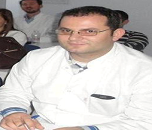Day 2 :
- Case Reports on Psychology |Neurology| Ophthalmology |Dentistry |Cardiology |Pulmonology |Gastroenterology |Diabetes |Obstetrics and Gynaecology |Epidemiology |Surgical | Paediatrics| Public Health | Dermatology |Emergency Medicine and Critical Care |Forensic and Legal Medicine |Internal Medicine |Orthopaedics & Rheumatology |Pharmacology and Therapeutics |Women’s Health |Radiology |Anaesthesiology |Pathology- Anatomic & Clinical |Sexual Health |Cancer Science| Clinical Pathology |Geriatric Medicine |Veterinary |Vascular and Endovascular Surgery
Session Introduction
Adel Mishriky
Suez Canal University, Egypt
Title: Impact of integrated care program on glycemic control and cardiovascular risk in adult patients with type 2 diabetes

Biography:
Prof. Adel Mishriky graduated from Ain-Shams University Medical school in Egypt in 1976, and completed her Doctoral degree in Occupational Medicine in a joint program between the University of California at Los Angeles (UCLA), and Suez Canal University (SCU) in Egypt. She had postdoctoral studies at London School of Hygiene and Tropical Medicine. He was the chairman of the department of Community Medicine at the Faculty of Medicine, SCU, and is currently an Emiratus Professor there. He has published more than 60 papers in reputed journals and has been serving in the editorial board of the Saudi Medical Journal.
Abstract:
Objective: To evaluate the impact of a multidisciplinary care program for patients with uncontrolled type 2 diabetes (T2D). Methods: We conducted a before-and-after study among patients with uncontrolled T2D and/or comorbidities at a primary care center in Riyadh, Saudi Arabia. The intervention consisted of intensified and patient-specific multidisciplinary care. The team included a senior family physician, nurse, clinical pharmacist specialist, dietician, diabetic educator, health educator, and social worker. Outcomes measured were HbA1c, fasting blood glucose (FBG), lipid profile, and blood pressure (BP). Results: 41 patients were included in the study. Mean age was 56.2 years. HbA1c, FBG, triglycerides, and total cholesterol were significantly reduced in the post-intervention stage (reductions of 18.5%, 21.0%, 16.0%, and 10.5%, respectively). The reduction in HbA1c was highest among patients with uncontrolled diabetes without comorbidity (25.7%), moderate among patients with cardiovascular disease and/or dyslipidemia (12.6%) and minimal among those with renal problems (0.3%, p < 0.05). LDL cholesterol was also reduced (10.5%, but not significantly). HDL cholesterol and BP did not show any significant changes in the postintervention stage. Conclusion: Integrated care was associated with a 20% improvement in glycemic control and up to a 16% reduction in serum lipids but no change in blood pressure among patients with T2D at high risk of cardiovascular disease.
Hongwei Wan
Shanghai Proton and Heavy Ion Center, hina
Title: Impact of intervention on breastfeeding outcomes and determinants based on theory of planned behavior

Biography:
Hongwei wan has completed his PhD at the age of 45 years from ChiangMai University, School of Nursing. She is the director of Nursing Department, Shanghai Proton and Heavy Ion Center, China. He has published more than 20 papers in domestic and international journals and has been in charged of several research program.
Abstract:
Breastfeeding knowledge, attitude, subjective norm, and perceived control are significant determinants of breastfeeding, according to the theory of planned behavior (TPB). This study aims to investigate the effectiveness of the TPB-based intervention program in improving exclusive breastfeeding, and the interaction of time and intervention on these determinants of breastfeeding. 285 primiparous mothers were included, with 157 mothers in the experimental group and 128 mothers in the control group. The experimental group received the TPB-based intervention program delivered during 6 weeks postpartum, which focused on improving mohters’ breastfeeding knowledge, attitude, subjective norm and perceived control, while both the experimental and control groups received the standard obstetric care. Scores of breastfeeding knowledge, attitude and breastfeeding control increased with time from baseline to 6 weeks postpartum, while breastfeeding subjective norm decreased at 6 weeks both in the experimental and the control groups. Besides, scores of the four determinants were significantly higher in the experimental group than these in the control group at 3 days and 6 weeks, except for breastfeeding control at 6 weeks, which resulted in the higher exclusive breastfeeding rates at 3 days and 6 weeks in the experimental group than the control group. The TPB-based intervention was effective in promoting exclusive breastfeeding during 6 weeks postpartum. Future interventions are recommended to adjust intervention strategies with time, and give more focus on providing continued breastfeeding support after discharge.
Mahmoud El-Shafei
Ain Shams University, Egypt
Title: Case report: An amazing case of mixed osteoclastic and pleomorphic giant cell tumor of the pancreas in a 53 years old man

Biography:
Mahmoud El-Shafei has completed his MD degree in General Surgery, Faculty of Medicine, Ain Shams University (1994) and completed the ISO Training course- Quality system documentation-Atlantic Engineering-Management Academy (AEMA). He is currently working as a Professor of General and Laparoscopic Surgery, Ain Shams University, Egypt. He is also a Consultant of General, Laparoscopic & Oncosurgery in Ain Shams Specialized Hospital & Eldemerdash University Hospital. He is a Visitor Consultant of General, Laparoscopic & Oncosurgery, Shobra Health Insurance Hospitals and General Transportation Hospitals from 2006 to till date.
Abstract:
Giant cell tumors of the pancreas come in three varieties-osteoclastic, pleomorphic, and mixed histology. These tumors have distinctive endoscopic, clinical, and cytological features. Giant cell tumors have a controversial histogenesis, with some authors favoring an epithelial origin and others favoring a mesenchymal origin. The true origin of these lesions remains unclear at this time. These are also very rare tumors but proper identification and differentiation from more common pancreatic adenocarcinoma is important. The risk factors of these tumors and the prognosis may be different from those associated with standard pancreatic adenocarcinoma. In this case report, we will discuss a case of a 53 years old gentlemen who presented with a 6 month history of vague abdominal pain, imaging studies revealed a distal pancreatic mass infiltrating the spleen. Distal Pancreatectomy and Splenectomy was done and the patient was discharged home after having an uneventful postoperative period.
Valsamaki P
University General Hospital “Alexandraâ€, Greece
Title: Scintigraphy with 99mTc-Pyrophosphate contributes in avoiding pitfalls by non-invasive diagnosis of TTR related cardiac amyloidosis

Biography:
Valsamaki P has completed her PhD from Aristotle University School of Medicine of Thessaloniki, Greece and postgraduate studies from Aristotle University of Thessaloniki, National and Kapodistrian University School of Medicine of Athens, Greece, and Nuclear Medicine Department, University of Bologna, Italy. She works as consultant in the Nuclear Medicine Department of the UGHospital Alexandra, Athens, Greece. She has published more than 25 papers in reputed journals, participated in more than 10 research protocols, received highlights distinction in 10 presentations/articles, and has been serving as an Editorial Board Member (HJNM) and as a reviewer (ANM) of repute.
Abstract:
Cardiac amyloidosis (CA) as a cause of cardiac insufficiency may be attributed to light-chain cardiac amyloidosis (immunoglobulin light-chain amyloidosis – AL) or to transthyretin (transthyretin-related amyloidosis – ATTR), whether familial amyloid cardiomyopathy or wild type (senile) TTR amyloidosis. The underlying pathophysiology, the treatment as well as the prognosis differ significantly between these entities. Diagnosis can now be augmented by using the non-invasive method of technetium-99m pyrophosphate (99mTc-PYP) scintigraphy instead of the invasive cardiac biopsy. We present the case of a patient which was initially regarded as suffering from AL amyloidosis based on the presence of a small monoclonal protein and plasma cell bone marrow infiltration which was then correctly typed as ATTR by 99mTc-PYP. Our patient is a 75-years old female who underwent cardiac MRI indicating amyloidosis. Myocardial scintigraphy (planar and tomographic imaging) with 740 MBq 99mTc-PYP was performed 75 min p.i. myocardial radiotracer retention was evaluated optically and further semi quantitatively analyzed. The retention over myocardium was highly increased, with a heart-to-contralateral (H/CL) count ratio of 1.67, prompting further testing for typing of amyloid. Fat aspirate was positive for amyloid. Mass spectrometry then revealed that the amyloid deposits were TTR and not light-chain derived. In conclusion, this case demonstrates that 99mTc-PYP scan is a simple, cheap, non-invasive and widely available method of utmost importance in the identification of patients with the ATTR CA subtype, with subsequent therapeutic and prognostic implications.
Paulo Eduardo Ocke Reis
Vascular Clinic Ocke Reis, Rio de Janeiro, Brazil
Title: Embolization for visceral artery aneurisms

Biography:
Reis PEO is specialist in Vascular Surgery and Endovascular Surgery . Adjunct Professor of Vascular Surgery and Professor, Graduate Course in Cardiovascular Sciences. He is coordinator of the Vascular Surgery Service, University Hospital Antonio Pedro, Federal University Fluminense. Brazil / Rio de Janeiro / Niterói .He is also Editor-in-Chief-Journal of Vascular & Endovascular Surgery . EJVES Short Reports Editorial Board - Associate Editor
Abstract:
De Bakey and Cooley did the first successful operation for a visceral artery aneurysm (VAA) in 1953. They are relatively rare and the risk of rupture is associated with high mortality .The majority of patients are asymptomatic prior to rupture and the main indication of elective treatment is size, now a days endovascular procedures as embolization or covered stents have increased the treatment options available to comorbid patients not suitable for open repair. VAAs are seen more often these days with the more widespread use of computed tomography. Coil embolization techniques are often used to “trap’” the aneurysm between coils placed proximally and distally within the normal part of the parent artery. This technique is well suited for aneurysms in larger arteries but requires adequate collateral circulation to the end organ. VAA can often be excluded from the circulation in this way by coil embolization of first the distal and then the proximal segment of the parent artery. Modern endovascular techniques with promising short- and long-term results could broaden indications to treat asymptomatic VAA. The promising results of endovascular treatment in elective settings could lead to broader indications, thus reducing life-threatening rupture. The advances with embolization techniques in the last decades are quite evident, and the field of endovascular surgery and minimally invasive techniques has accompanied this development, aiming at overcoming its limitations. Keywords: visceral artery aneurysm, aneurysm rupture, embolization, coil embolization.
Nadia H. Rizkalla
Suez Canal University, Egypt
Title: Screening program for congenital hypothyroidism in Egypt (2007-2010): Coverage and main outcomes

Biography:
Nadia H Rizkalla has graduated from Cairo University Medical School in 1976, and completed her Doctoral degree in community medicine in a joint program between the University of California at Los Angeles (UCLA), and Suez Canal University (SCU) in Egypt. She had postdoctoral studies at London School of Hygiene and Tropical Medicine. She was the Chairman of the department of Community Medicine at the Faculty of Medicine, SCU, and is currently an Emiratus Professor there. She has published more than 20 papers in reputed journals and has been serving as WHO consultant.
Abstract:
The Egyptian Ministry of Health and Population (MOHP) endorsed the screening program for congenital hypothyroidism (CH) using TSH assay method. This study aims to study and evaluate the impact of CH on growth and development of treated cases, compliance of the healthcare providers' (physician and nurse) to the current program, compliance of the target families' to the current protocol of management program, and the coverage rate for 3 years (2007-2010). The study was carried out through descriptive, cross-sectional and follow-up approaches in pediatric clinic of Insurance Students' Hospital in Ismailia Governorate. The setting is responsible for management of positive CH cases detected by screening test within the national program. The tools used for data collection included a structured interview questionnaire for mothers of CH infants in addition to physical examination of infants including anthropometric measurements. An open interview questionnaire was used for healthcare providers, and an abstraction checklist form to assess the coverage rate of the program from records of live births and positive cases. The coverage rates of the program were 92.4%, 91.7%, and 90.9% for the years 2007, 2008, and 2009 respectively. Screening was done for 86.7% of studied subjects at age range 7-14 days, and 53.3% of cases were confirmed at this age. 60% of cases started therapy at age 14-21 days; 20% and 26.7% of cases showed improvement for wt/age and ht/age respectively, and 40% and 26.7% in personal-social and problem solving areas respectively. Only one third of mothers were informed about the test during pregnancy, and their compliance rates to therapy, scheduled visits, and investigations were 53.3%, 26.7%, and 86.7% respectively. Although studied physicians were aware of the national program, they had deficient knowledge about CH diagnosis and therapy, whereas nurses were not aware of the importance of health education to mothers. In conclusion, the program coverage is high and the outcomes of therapy are promising. Healthcare providers’ awareness and knowledge need to be improved.
Neeta Mohanty
Siksha O’ Anusandhan University, Bhubaneswar, India
Title: Diagnostic pitfalls of adult langerhan’s cell hisyiocytosis with jaw involvement

Biography:
Neeta Mohanty is an acclaimed Oral Pathology and Microbiology scholar and leader who is serving as Dean, Faculty of Dental Sciences and Department chair of Oral Pathology and Microbiology, Siksha ‘O’ Anusandhan University, Bhubaneswar, India. She is a Post Graduate teacher and PhD guide with a teaching experience of twenty years. Prof. Mohanty being a true academician and oral diagnostician has immense research acumen in her field with many publications to her credit. She is the holder of the Honorary title” The Name in Science” awarded by the Socrates committee and member of The Academic Union Oxford UK.
Abstract:
Langerhan’s cell histiocytosis (LCH) a proliferative disorder of histiocytes, encompasses multiple diseases histologically composed of cells having the phenotypic markers of Langerhan’s cells. Owing to it’s incidence of 1-2 in a million, many questions ranging from etio-pathogenesis to therapy remain unanswered. The absence of clinical and radiological pathognomonic features also delays the diagnosis. LCH in adults is rare and with only thirty percent affecting the jaws, we are presenting two cases of adult LCH with jaw involvement and a note on delay in diagnosis. Forty four year old male initially diagnosed as Central giant cell granuloma of mandible and filariasis of maxilla was later diagnosed as LCH when the lesion recurred in the maxilla two years later. Another case of a forty two year old male presented with pain in the spine and was diagnosed and treated for tuberculosis. The development of another lesion in the jaw after five years led us to the diagnosis of LCH. Positive immunoexpression with CD1a, CD207, CD68 and S-100 in both the cases helped in a definitive diagnosis. Osteolytic lesions produced by this group of lesions are also at times misleading since it mimics metastatic tumours and other primary osteolytic lesions. These cases are a reminder of the possibility of occurrence of this rare disease in the oral cavity which might manifest itself in multiple presentations, thus easily leading to misdiagnosis and being overlooked by the diagnostician.
Ghada Ismail
Ain Shams University, Egypt
Title: Case report: Leuconostoc paramesentroids biliary infection in a liver transplanted Egyptian patient

Biography:
Ghada Ismail is a Professor of Clinical & Chemical Pathology since 2008 at Faculty of Medicine , Ain Shams University and has completed MD degree in 1998. Director laboratories of Ain Shams University Specialized hospital, Secretary of Supreme Infection control Committee University hospitals, Board member of TQM Diploma, Open Education, Ain Shams University
Abstract:
Background: Leuconostoc species are important pathogenic bacteria in individuals with poor immune function especially liver transplanted patients. Leuconostoc species are catalase-negative, gram-positive microorganisms with coccoid morphology which have been previously considered as agents that cause severe hospital outbreaks that threaten the lives of large numbers of persons.
Objectives: To isolate& differentiate Leuconostoc species among Vancomycin Resistant Enterococci (VRE) isolates which recovered from clinical specimens of liver transplanted patients.
Patients & Methods: Forty liver transplanted patients in Ain Shams University Specialized Hospital were involved in this study that had the criteria of post-operative biliary infection over a period of one year from January to December 2010.Liver function tests, Complete blood count, Doppler ultra-sonography on the abdomen and Magnetic Resonance.Nasal and biliary secretions were collected and submitted for culture and sensitivity. Twenty clinical isolates of Vancomycin Resistant streptococci were isolated from twenty patients (from both bile and nasal swabs). The strains were identified by conventional microbiological techniques; API20 Strept, sequencing PCR and antimicrobial susceptibility by disk diffusion method & Vancomycin E-test was done.
Results: Two Leuconostoc paramesentroids isolates were identified among 20 clinical isolates of VRE. Both were isolated from one patient (nasal and bile) which were sensitive to Penicillin, Ampicillin, Erythromycin, Gentamycin, Teicoplanin, Tetracycline, Clindamycin and resistant to Vancomycin(MIC ≥256mg/mL).
Conclusion: Leuconostoc species may be considered as a colonizer with potential pathogenicity especially in immuno-compromised transplanted patients which must be screened and differentiated from VRE isolates.
Youssef Abo Elwan
Hera General Hospital, Saudi Arabia
Title: "Methotrexate overdose to a patient with ectopic pregnancy under medical management: A case of medication error, a preventable adverse event "

Biography:
Youssef Abo Elwan works as a Professor of Obstetrics & Gynecology, Faculty of Medicine, Zagazig University, Egypt. He is the head of High Risk Pregnancy Unite. Faculty of Medicine; Zagazig University, Egypt. He is the member of High council Supreme for Professor Promotion in Egyptian Universities. He is also the Reviewer in many national & international journals.
Abstract:
A 25-year-old female patient admitted via ER to Gynecology Ward. She was G2P0+1 with history of 5 weeks amenorrhea, complaining from mild PV bleeding since a day before admission. There was a history of previous ectopic treated by Laparoscopy.
The patient was vitally stable. On Examination, the abdomen soft, lax. PV with os closed with mild bleeding. Her CBC and Blood chemistry was within normal range. Pregnancy test (in ER) was positive, her B-hcg was1088. TVS ,shows empty cavity, left adnexal mass, pouch of Douglas free.
Plan of management was Medical treatment by Methotrexate 50 mg IM stat with serial repeating B-hcg after counseling the patient and her husband.
The patient received 500 mg im instead of 50 mg im !!
Imediately, Blood samle taken and send to Toxocology Center to determine serum Methorexate level, CBC, LFT RFT.
Plan of management was as follows :
1. Calcium Folate " Leucovorine" as 15mg per amule/6 h iv.
2. Normal Saline 500ml +Sodium bicarbonate 8.4% 90 ml to be 20 cc/h by infusion bump.
3. Normal Saline 500 ml/ h to keep urine PH>7.
4. Repeat CBC, RFT, LFT Daily.
5. Serial Serum level of Methotrexate in Toxocology Center.
6. Close Observation.
Methotrexate Serum level before starting Antidote was 85 ( Toxic level 24 hours after injection >5 mol/ L). Serum level of Methotrexate start to decrease daily. All other investigations came within normal and the patient discharged in good condition with follow up in OPD after one week.
The case discussed in Sentinel Event Committee and a Policy of Adminsteration of these Cytotoxic Drug implemented.
In Conclusion ; Patient life saved from Toxic effect of Methotrexate by Rapid Antidote of LEUCOVORINE and Hydration of the patient. Multidisciplinary input is of paramount importance.
Z. Buja
University Clinical Centre of Kosovo, Kosovo
Title: Repair of degloving fingers with abdominal tunnelsation flap

Biography:
Z. Buja is currently working in the Department of Plastic Surgery, University Clinical Centre of Kosovo, Pristina, Kosovo
Abstract:
Introduction: Degloving injury is serious injuries that define as an extensive section of skin is completely torn off the underlying tissue, severing its blood supply. Their surgical treatment is very difficult and challenge for the reconstructive surgeon, and consist in covering with good quality, pliable and sensate skin.
Patient: We present a case with degloving injury of fingers, of which repair with the abdominal tunnelsations flap.
Conclusion: Various reconstructive procedures have been adopted in the past years, but still with poor results. The application of this flap, a 1-flap solution, is reliable and convenient in the treatment of degloving fingers.
Jignesh Kothari
U. N. Mehta Institute of Cardiology and Research Center, India
Title: Surgical repair of multiple congenital left ventricular aneurysms with rupture into left atrium

Biography:
Dr. Jignesh Kothari currently works in U. N. Mehta Institute of Cardiology and Research Center (affiliated to B J medical college, Ahmedabad), India.
Abstract:
Congenital left ventricular aneurysm (CLVA) is a rare disease. Patients with multiple congenital LVAs are even rare. Clinical presentation of CLVAs varies and is usually diagnosed by exclusion. Very few cases of successfully operated multiple congenital aneurysms with rupture into left atrium (LA) have been reported.Congenital left ventricular aneurysm associated with multiple aneurysms with rupture into the LA is rare. We report a 17 year old male with 2 CLVAs, one of which ruptured into the LA, and discuss the surgical management and review the literature of this rare disease.
Praful Kakumanu
Dr Pinnamaneni Siddhartha Institute of Medical Sciences & Research Foundation, India
Title: Cardiac magnetic resonance imaging features of a rare cardiac genetic disorder: Arrhythmogenic right ventricular dilated cardiomyopathy

Biography:
Praful Kakumanu has completed his MBBS from the NTR university of Health Sciences, India and graduated in 2007. He obtained a masters degree (MD Radiology) from the same university in 2012. He is currently working as an Assistant prof since 5 years at Dr Pinnamaneni Siddhartha institute of medical sciences, Vijayawada, India. He is also working as consultant at Best diagnostics and imaging, Vijayawada, India. He is the partner and director of Pramodini diagnostics
Abstract:
Objective: To emphasize the diagnostic role of cardiac magnetic resonance imaging (CMRI) in arrhythmogenic right ventricular cardiomyopathy (ARVC).
Method: CMRI of a young Asian female who presented with palpitations and history of sudden death in the family, imaged by a 3.0 Tesla MRI scanner with a maximum gradient strength of 33mT/m and a 16 element phased-array coil with electrocardiography gating.
Result: Right ventricle (RV) showed areas of increased signal intensity on T1 weighted images, at the epicardial border extending inwards upto endocardium as a result of fatty infiltration. There was no obvious right ventricular dilatation; systolic function was impaired with an ejection fraction of 36%. Dysynchronous right ventricular contraction in addition to areas of akinesis was observed. Scalloping of the right ventricular free wall was evident, fulfilling the major criterion for the diagnosis of ARVC. Left ventricle had a normal wall thickness but impaired function with an ejection fraction of 41%. Global hypokinesis with severe septal involvement was seen, a regional wall motion abnormality which is a minor criterion in the diagnosis. Presence of mild mitral regurgitation resulting in mild left atrial dilatation and moderate right atrial dilatation due to tricuspid regurgitation were associated features. Aortic and pulmonary valves were normal. Diffuse delayed enhancement of transmural right ventricular free wall, right ventricular trabeculations and mild right ventricular septal enhancement on the post contrast phase was noted
Conclusion: ARVC can be diagnosed by CMRI using the revised task force criteria, can prevent unnecessary cardiac procedures & interventions.
Hoxha E
University Clinical Centre of Kosovo, Kosovo
Title: Released of post-burn contracture of fifth fingers with full skin graft

Biography:
Hoxha E was born on August 7, 1969, in Podujevo, Kosovo. He finished the elementary and high school in birthplace and the faculty of medicine and specialization in Pristina. During professional development he has been in different places from 2007 to 2013, in 2007 for a month at the University of Isparta, Turkey, in 2008, for two months at the Ludwigshafen BG- Unfallklinik (part of Heidelberg University), in the center for burns and plastic surgery, in 2013, for two months at the Manhein-University Clinic in Germany. He participated with abstracts in regional, European and international conferences of plastic surgery. Currently he is working in the University Clinical Center of Kosovo in Pristina in the department of plastic and reconstructive surgery.
Abstract:
Introduction: Post-burn finger contractures are still a common event in our surgical work. They presents after deep hand burns. The treatment and prophylaxis of these post-burn deformities are a crucial moment in the treatment of patients with burns
Patient: We present a case with post-burn dorsal (extensor) major contractures of fifth fingers (about 150°), of which released in two stages reconstruction with the full skin graft.
Conclusion: Managing of post-burn hand deformities can be a long and complex procedure. Timely wound closure and the development of an individual programme for surgical treatment of post-burn finger deformities are crucial for optimal outcomes in patients with burns.
Nayantara Rao Gandra
Apollo Institute of Medical Sciences & Research, India
Title: Rud’s Syndrome: A case report

Biography:
Nayantara Ro Gandra obtained bachelor degree in Medicine & Surgery (MBBS) from the NTR university of Health sciences, Andhra Pradesh, India in the year 2007. She did her MD (Pediatrics) from the same university in 2013. Currently, she working as an Assistant professor(Pediatrics) since 4 years at Apollo Institute of Medical Sciences and Research, Hyderabad, India. She has 8 publications to her credit in international and national journals.
Abstract:
RUD's syndrome is a rare hereditary disorder of predominantly autosomal recessive inheritance, characterised by short stature, hypogonadism, icthiyosis, epilepsy and low intelligence quotient (IQ). A 14 year old adolescent male born to consanguineous parents presented with infantile genitalia, history of seizures since childhood and was taking antiepileptics (Carbamazepine 30mg/kg/day). He also had a very dry scaly icthyosiform skin (Fig 1) since birth, which aggravated during winter and was put on emollients. His scholastic performance was very poor. On general examination, he was short statured with height being below the 3rd centile as per the WHO growth charts and weight being 23 kgs. He had small sized genitalia (Fig 2) with no development of secondary sexual characteristics. However, systemic examination was unremarkable. On thorough investigations, complete blood picture was normal, ophthalmic and hearing assessment revealed no abnormality. Ultrasonography of the abdomen was normal. Hormonal assay was abnormal with testosterone (0.025ng/mL), FSH (0.08mIU/mL) and LH (<30mIU/mL) being extremely low suggesting hypogonadotropic hypogonadism whereas thyroid function tests were normal. EEG was abnormal with bilateral spikes and waves. On developmental assessment, it was observed that the child had a low to borderline IQ ( 50-60). Based on the history, physical examination and laboratory investigation the diagnosis of RUD's syndrome was established and the child was being treated symptomatically and was adviced to follow up periodically as there is no specific treatment for this disorder and multidisciplinary approach remains the mainstay of management.
Astrit M. Gashi
University Clinical Center of Kosovo, Kosovo
Title: Save of the uterus after a postpartum hemorrhage aberrante

Biography:
Astrit Malush Gashi was born Kosovo. Medical Faculty he finished in 2009 in University of Prishtina, Kosovo. After graduation in Medical Faculty he worked as primary physician in Family Medicine, in Rahovec. Also, it was President of the Commission for Emergency aid in Department for Medicine and Social Welfare / Rahovec. In 2011 started working in Gynecology and Obstetrics Clinic, University Clinical Centre in Prishtina, as doctors in specialization in Obstetrics and Gynecology. It was a lecturer in the framework of the Continuous professional education, in Family Medicine in Kosovo, and was a participant and presenter of scientific papers in many congresses and national and international conferences. He has published on 40 research papers and scientific articles focused on Multiple pregnancy, Reproductive Endocrinology & Infertility, Gynecologic surgery, Menstrual disorders, Perinatal outcomes, Methods of delivery etc.
Abstract:
Placenta previa is the placement of the placenta in the inferior segment of the uterine cavity. This defective implantation of the placenta is in most cases due to a defective vascularization of the decidua. Multiparity, great mother’s age, previous abortions, previous caesarean section, multiple pregnancy, fetal abnormalities, leiomyoma uteri act., constitute some risk factors that favor the development of placenta previa. In report to the degree of coverage of the internal orifice of the uterus from placental tissue, placenta previa divided into: placenta previa totalis, placenta previa partialis, placenta previa marginalia and low-lying placenta. The dominant clinical signs are vaginal bleeding, which varies from light spotting to heavy bleeding that could seriously endanger the woman’s life. In diagnosing of placenta previa help symptoms and signs U/S examination is used for diagnosis with up to 95 percent accuracy. Placenta previa complications appear on 0.5% of all pregnancies. These complications can be; maternal and fetal. All these complications have an effect on the increase of maternal and fetal or neonatal mortality rate. We report a case of a 31-year-old woman admitted to our hospital in the department of Obstetrics and Gynecology with signs and symptoms of placenta previa. One day later, the patient gave birth by caesarean section to a healthy baby, but two hours later, the patient’s condition was complicated by postpartum hemorrhage (PPH). The diagnosis was based on symptoms and signs as continuous bleeding ‘ex utero’, clots in vagina, uterine atony, distended bladder, blood loss greater than 1,000 ml, there were signs of a clinically apparent shock. Using a conservative approach such as the application of uterotonic drugs and uterine massage, we managed to save the uterus of the patient.
Frank Daniel Martos-BenÃtez
“Hermanos Ameijeiras†Hospital, Cuba
Title: Docetaxel-induced acute respiratory distress syndrome: A report of ten cases

Biography:
Frank Daniel Martos Benítez completed his medicine doctor at the age of 24 years from Medical Science University of Havana, Cuba. He is a doctor of the intensive care unit of the “Hermanos Ameijeiras” Hospital. He is currently Professor in Critical Care Medicine of Medical Science University of Havana, Cuba. Dr. Martos specializes in research relating to critically ill cancer patients. Has published more than 12 research papers and presentations in international scientific journals and conference proceedings and has been Invited Speaker in many International Conferences.
Abstract:
Docetaxel is a commonly used drug in chemotherapy for the treatment of cancer patients such as breast and lung cancer patients. Docetaxel-associated pulmonary fibrosis had been reported. Pulmonary gas exchange can be affected in severe cases; however, docetaxel-induced acute respiratory distress syndrome is a life-threatening complication no informed before. We report ten cases admitted in an oncological intensive care unit (ICU) with acute respiratory distress syndrome (ARDS) after beginning docetaxel chemotherapy. The mean age was 59,8 years (SD 10,2 years) and all patients were female. The PaO2, SaO2, PaO2/ FiO2 and PaCO2 at ICU admission was 75,1 mmHg (SD 33,0 mmHg), 81,5% (SD 11,4%), 141 mmHg (SD 74,6 mmHg) and 46,5 mmHg (SD 17,2 mmHg), respectively. Sexty percent developed a severe ARDS (PaO2/ FiO2 < 100 mmHg). Invasive ventilatory support was needed in 70% of cases. The mean peak pressure, plateau pressure, compliance and airway resistance at ventilation day was 35,2 cmH2O (DE 1,3 cmH2O), 31,6 cmH2O (DE 1,3 cmH2O), 19,8 ml/cmH2O (8,6 ml/cmH2O) and 44,5 cmH2O/L/seg. (10,0 cmH2O/L/seg.), respectively. The ICU mortality rate was 70%. Docetaxel-induced ARDS is an uncommon type of ARDS, but it should be taken into account in cancer patients treated with that drug.
Jignesh Kothari
U. N. Mehta Institute of Cardiology and Research Center , India
Title: Coronary artery disease with coarctation of aorta in elderly patient

Biography:
Dr. Jignesh Kothari currently works in U. N. Mehta Institute of Cardiology and Research Center (affiliated to B J medical college, Ahmedabad), India.
Abstract:
Coarctation of the aorta is typically a disease of childhood and early adulthood, and there is a reduced life expectancy in patients who have not undergone correction. Survival to older age is rare, due to severe cardiovascular complications. Because there are only a few cases of elderly patients with uncorrected aortic coarctation, management strategies in these patients are challenging. We describe the case, first diagnosed with Coronary Artery Disease, then developed aphasia, then diagnosed coarctation of aorta at 56 year of age. Coronary artery bypass grafting was performed, and the coarctation was managed with ventral aorta repair. At the 6 months follow-up visit, the patient was asymptomatic and maintained a normal blood pressure with minimal gradiant between upper and lower extremities. His aphasia was cured after 2 month of surgery.To our best knowledge there is hardly such case report available in literature.
Jignesh Kothari
U. N. Mehta Institute of Cardiology and Research Center, India
Title: Invasive pericardial hydatid cyst: Excision of multiple huge cysts

Biography:
Dr. Jignesh Kothari currently works in U. N. Mehta Institute of Cardiology and Research Center (affiliated to B J medical college, Ahmedabad), India.
Abstract:
Cardiac echinococcosis is a rare but potentially serious complication of hydatid disease caused by the larval stage of cystode tapeworm Echinococcus granulosus. Most common sites of the infection are the liver and the lungs with rare cardiac involvement even in endemic countries. Prevalence of cardiac involvement is 0.01 to 2% of all registered echinococcosis cases. Because there is no specific clinical picture, the diagnosis of cardiac hydatidosis usually arises from clinical suspicion. Cardiac echinococcosis rarely mimics acute coronary syndrome. We present herein a case of hydatid cyst of the left ventricular posterolateral wall that caused ischemic changes on electrocardiography (ECG), mimicking acute coronary syndrome with typical angina pectoris as presented in this report. Hydatid disease is a parasitic infection caused by larvae of Echinococcus granulosus, which is still endemic in many developing countries. Cardiac involvement is a rare, but potentially a very serious complication of the hydatid disease on account of varying clinical presentations and nonspesific symptoms and occasionally mimics Acute Coronary Syndrome. We herein, describe a case of ruptured left ventricular hydatid cyst presented as acute inferio lateral myocardial infarction with ECG changes. As coronary angiography revealed normal coronaries, the final diagnosis was made on basis of echocardiography and magnetic resonance imaging. Complete surgical resection of both the cysts on cardio pulmonary bypass followed by albendazole therapy yielded excellent outcome.

Biography:
Josaphat Ndelo-di-Phanzu is a Congolese Toxicologist. After completing his graduation as Pharmacist at the Faculty of Pharmacy of the University of Kinshasa in 1975, he moved to Belgium at the Katholieke Universiteit Leuven and obtained Master’s degree in Pharmaceutical Sciences followed by a Doctorate degree in Pharmaceutical Sciences, Branch Toxicology in 1984. He became an Associate Professor in 1986, Professor in 1998 and Ordinary Professor in 2005. Considering the administrative level, he was the Head of the Laboratory of Food and Drug Control of the University of Kinshasa, Head of the Department of Biopharmaceutical Sciences, Vice-Dean of the Faculty of Pharmacy of the University of Kinshasa, Dean of the Faculty of Pharmacy, Rector of the University of Kinshasa and the Head of the Laboratory of Toxicology. He is the President of the Ethics Committee of Central Africa and Vice President of National ethics Committee of DR Congo in the fi eld of ethics of biomedical research.
Abstract:
During the 3rd Euro case reports in Valencia, Spain, a strange medical case taking place in the DRC has been presented. Indeed, while the Congolese population is, until now, convinced of the existence of « massive criminal poisonings », throughout the national area, originating from the East region of the country, we incredibly observed and demonstrated that actually, the phenomenon is a silent, surprising and unexpected Helicobacter pylori epidemic with numerous extra-digestive pathologies. A relevant manuscript has been written in the extension of the Valencia Spain conference. The present subject will deal with “picturesque meanders” by which our research work passed, lengthening it to more than twenty five years before getting appropriate results. The presentation will start by a brief summary of the DRC Helicobacter pylori phenomenon described in Valencia and hypothesis raised for better knowledge of Helicobacter pylori infection, at the international level. In a second time, It will focus on the influence and consequences of some followed factors in our study: HIV infection, political situation in DRC, lack of equipments, population ignorance, traditional practitioners cupidity, lack of financial means, deficiency of South-North collaboration, and so on… Afterwards, some interesting, incredible extra-digestive DRC Helicobacter pylori cases observed in our study will be discussed. Finally a brief conclusion will present some useful propositions drawn from the experience of this DRC Helicobacter pylori study.
Neema Tiwari
Era’s Lucknow Medical College, India
Title: A rare presentation of pure yolk sac tumor in an undescended testis

Biography:
Neema Tiwari is currently pursuing MD in Pathology from Eras luck now medical college and Hospital. She has participated in several national and international conferences in the field of pathology and medicine and has published over 20 papers in various national and international journals. She has also won various awards for oral paper presentations and has active interest in the field of oncopathology.
Abstract:
Germ cell tumors are commonly encountered malignant tumors’ in adult males especially in the 20-40 year of age. They constitute one of the major leading causes of death in young males. Testicular tumors can be classified as seminomatous and non-seminomatous germ-cell tumor (NSGCT) types. Mixed germ cell tumors are known to contain more than one germ cell component and are much more common than any of the pure histological forms representing 32%-60% of all germ cell tumors. This was a case of germ cell tumor occurring in an undescended testis which was grossly a globular, encapsulated tissue piece measuring 15x9x7 cm. received. Outer surface shows two ruptures in the capsule with tumor tissue protruding out and few congested blood vessels on the surface. Cut surface was variegated, with tumor measuring 12x11 cm; within the tumor, areas of hemorrhage and spongoid areas are also seen.
Microscopy showed atypical cells lying in variable patterns. Large area of tumor is forming a reticular pattern having small cystic spaces lined by atypical cells with moderate pleomorphism , hyper chromatic nuclei coarse chromatin and prominent nucleoli with moderate amount of eosinophilic cytoplasm. Also seen were sheets of atypical cells with moderate pleomorphism, hyperchromasia coarse chromatin and prominent nucleoli. A foci of polyvesicular vitelline pattern having small cystic spaces with honeycombing also seen. Fair number of Schiller Duval Bodies with central vascular core filled with RBC with peripheral cuffing of atypical cells also seen admixed with large number of congested blood vessels , areas of haemorrhage and eosinophilic necrosis ,moderate chronic inflammatory infiltrate and foci of tumor autolysis. Histologically a pure germ cell tumor, Yolk sac tumor with five different patterns in one case is a rare finding for us. To the best of our knowledge such a presentation has not been seen in the last 10 years in our institute with less than 5 cases of germ cell tumor coming to our institute every year. The patient has been on monthly follow-up since then and is well.
Neema Tiwari
Era’s Lucknow Medical College, India
Title: Tuberculosis a rampant problem an intriguing presentation-Indian case scenario

Biography:
Neema Tiwari is currently pursuing MD in Pathology from Eras luck now medical college and Hospital. She has participated in several national and international conferences in the field of pathology and medicine and has published over 20 papers in various national and international journals. She has also won various awards for oral paper presentations and has active interest in the field of oncopathology.
Abstract:
TB in India is extremely common especially in young, adults than other age grouped. Tuberculosis burden continues to remain huge with more than half cases not getting registered under RNTCP. Controlling TB is complex yet urgent need of the hour. It is a measure of both economic and social means of development. The DOTS strategy needs vast improvement in its aims and scopes of development[1]. We encountered a case of discharging sinus n the cervical region in a 26 year female who was referred to us for FNAC. It was diagnosed as a case of chronic lymphadenitis with Tuberculosis with superadded acute inflammatory pathology resulting in a discharging sinus. Tuberculosis continues to be the biggest health problem in developing countries with enormous social and economic implications. Even in the developed countries, where the disease has been controlled to a large extent, it poses a challenge primarily due to poor patient compliance, negligence lack of education , awareness and apathy at the level of health professionals. This has resulted in a worldwide resurgence of tuberculosis. There is an urgent need to relook the strategy of tuberculosis management due to poor patient compliance in the Indian population. The efforts to control TB should be comprehensive, addressing all the concerning elements of TB diagnosis with good public partnership in the programmes.
Neginkhakpour
Post-doctoral Research Fellow, Iran
Title: "The Effect of Simultaneous Application of Laser Beam and Magnet in Treatment of Intervertebral Disc Herniation "

Biography:
Neginkhakpour is pursuing her Post-doctoral studies in the field of medical physics in Iran
Abstract:
Background: Disc Herniation is a common complication in the society and it is one of the main reasons for referring to physical medicine and rehabilitation clinics. Despite of various methods proposed for treatingthis disease, still there is disagreement on success of these methods especially in non-surgical methods, and thus current study aims at determining effect of laser beam and magnet on treatment of Intervertebral Disc Herniation.
Methods: During a clinical trial study, 80 patients with Intervertebral Disc Herniation underwent a combined package of treatment including magnet, laser beam, PRP and Prolotherapy during 6 months.
Results: Average age of patients was 51.25 ± 10.7 with range of 25 – 71 years. 30 men (37.5%) and 50 women (62.5%) took part in the study. average weight of patients was 64.3 ± 7.2 with range of 49 – 79 kg. highest level of Disc Herniation was L5 – S1 with frequency of 17 cases (21.3%). Disc Herniation was severe in 30 cases before treatment, but it reduced to 3 casesafter treatment.
Conclusion: This study indicates effect of combined treatment using non-invasive laser beam and magnet therapy on disco genic diseases and mechanical pains of spine is highly effective.
Keywords: Magnet therapy, Prolotherapy, discogenic, bulging, brotoshen
Oummou S
Center of the hospital campus Mohammed VI, Morocco
Title: " Pericardial effusion revealing multifocal tuberculosis in an immunocompetent: about a case"

Biography:
Oummou S currently working in Center of the hospital campus Mohammed VI, Morocco
Abstract:
Introduction: Tuberculosis is an endemic disease in developing countries and disadvantaged communities. The mode of revelation remains mainly the pulmonary involvement; The association of pericardial and neurological localization is extremely rare with a high mortality rate.
Observation: 25-year-old patient with no specific pathological ATCDs and no tuberculosis counts admitted to the emergency department for exercise dyspnea evolving during 1 month becoming stage IV with positional chest pain, productive cough with expectorations, asthenia, emaciation and febrile sensations . The clinical examination had objectified a deafening of the noises of the heart. The ECG was without abnormality with cardiomegaly on the thorax radio without obvious parenchymal abnormality. The cardiac ultrasound showed a pericardial effusion of great abundance with signs of tamponade. The patient underwent a pericardial puncture bringing a sero-hematic fluid. The study of this fluid was predominantly lymphocytic exudative with a high level of LDH. The hemogram had demonstrated lymphopenia at 700 / mm 3, hyponatraemia at 131 mmol / l at the ionogram, BK sputum was negative, IDR not done with a positive quantifier at 6.63. During his hospitalization the patient presented febrile partial convulsions of the left hemicorps. Cerebral imaging was performed (cerebral scan and MRI) demonstrating an appearance of cerebral tuberculoma. Antibacillary treatment was started with a good evolution.
Conclusion: Tuberculosis remains the most frequent aetiology which must be evoked before any pericardial effusion. Multifocal tuberculosis is usually severe and potentially life-threatening. The earlier the anti-tuberculosis treatment begins, the better the prognosis.

Biography:
Ram Sundar Twayana currently works in Shree Puspanjali Hospital, Nepal
Abstract:
Background
Cyanotic congenital heart disease is not a rare entity, but fistula between the right pulmonary artery and the left atrium is an uncommon vascular anomaly. Although it is a real challenge to diagnose the case, detailed clinical evaluation and selective investigations are keys for diagnosis, and surgical intervention is still considered the best treatment option.
Case presentation
A 19 years old girl from the remote village of Nepal presented with the history of exercise intolerance associated with cyanosis and clubbing of the extremities. We diagnosed her as a case of right pulmonary artery to left atrial fistula, a rare variant of pulmonary arteriovenous malformation. She underwent successful surgical correction of the anomaly under cardiopulmonary bypass surgery.
Conclusion
Direct communication between the right pulmonary artery and the left atrium is a rare cyanotic congenital heart disease, which is diagnosed late and often associated with the atrial septal defect. The best treatment available is surgical correction.
Renata Markosyan
Yerevan State Medical University, Armenia
Title: A rare case of papillary carcinoma at children’s age

Biography:
Renata Markosyan has completed her PhD at the age of 35 years from Yerevan State Medical University.She is the associate professor of endocrinology chamber of Yerevan State Medical University.She has published more than 33 papers in reputed journals.
Abstract:
The issues of etiology, pathogenesis, diagnostics, treatment and prognosis of the patients with thyroid cancer have been in the focus of the fundamental and clinical researches for the last two decades.
The character of the tumor clinical “behavior” is due to the variety of the histological types of the thyroid gland cancer. The search of genetic anomalies, causing hereditary predisposition to the thyroid gland cancer development, is clinically demanded direction of fundamental medicine. Studies revealed that hereditary (germinal) mutations in RET prooncogen often play role in the thyroid gland medullar cancer etiology. V600E mutation in BRAF gene prevailed in most cases and prevails in papillary carcinomas, it is also revealed in anaplastic and slightly differentiated carcinomas, originated from papillary carcinoma.
It is obvious, that the problem is of utmost importance. This proves the necessity of not only further improvement of the existing diagnostic methods and their efficacy evaluation, but also the search of new noninvasive research methods, which are informative enough, as well as developing of optimal diagnostic algorithm to diagnose thyroid tumor earlier and rational surgical and curative tactics in patients with such pathology.
Patient’s early age, aggressive course of the disease, as well as papillary cancer incidence in the family, what indicates the possibility of hereditary genesis, makes the specificity of the presented case. All this urges the necessity to carry out molecular genetic studies to reveal mutations.
Mohammed Alfawareh
King Fahad Medical City, Saudi Arabia
Title: Magnet Expandable Rods a Promising Technology but Can Lead to Catastrophic Failure, Case Report Study design: case report

Biography:
Mohammed Alfawareh currently works in Spine Department, National Neuroscience Institute, King Fahad Medical City, Riyadh, Saudi Arabia
Abstract:
Background:
Early onset scoliosis (EOS) has higher risk of large curve because have because they have longer growth potential, casting and braces can be used to delay surgery.
When progressing surgery may be needed, growth-friendly procedures, three categories were identified: distraction-based like growing rods, tension-based like staples and guided-growth like Shilla.
Growing rod has advantage of correcting spine deformity while preserving the growth but frequent surgeries may increase the complication rates.
Recently magnet expandable rods (MER) have been introduced as solution to overcome the need for frequent elongation surgeries; it has magnate gear that can be elongated remotely by external remote controller.
Methods
Case report of early onset scoliosis that was managed by MER, developed unique complication; catastrophic failure of both MER, after initial distraction, initial height was lost subsequently, never regained with subsequent distractions.
Results
MER failed and revised, both rods failed through the magnet gear, it was elongated and shortened in telescoping movement by simple hands power and couldn’t maintain distraction. To our knowledge this complication never been reported before, Akbarnia et al reported loss of the initial height after distraction in three patient but non failure.
Conclusion:
MER promising technology, allow spine growth while correcting the deformity, no need for subsequent surgeries and few reported complications, catastrophic failure never been reported.
Paulo Eduardo Ocke Reis
Fluminense Federal University, Brazil
Title: Embolization for visceral artery aneurisms

Biography:
Reis PEO is specialist in Vascular Surgery and Endovascular Surgery . Adjunct Professor of Vascular Surgery and Professor, Graduate Course in Cardiovascular Sciences. He is coordinator of the Vascular Surgery Service, University Hospital Antonio Pedro, Federal University Fluminense. Brazil / Rio de Janeiro / Niterói .He is also Editor-in-Chief-Journal of Vascular & Endovascular Surgery . EJVES Short Reports Editorial Board - Associate Editor
Abstract:
De Bakey and Cooley did the first successful operation for a visceral artery aneurysm (VAA) in 1953. They are relatively rare and the risk of rupture is associated with high mortality .The majority of patients are asymptomatic prior to rupture and the main indication of elective treatment is size, now a days endovascular procedures as embolization or covered stents have increased the treatment options available to comorbid patients not suitable for open repair. VAAs are seen more often these days with the more widespread use of computed tomography. Coil embolization techniques are often used to “trap’” the aneurysm between coils placed proximally and distally within the normal part of the parent artery. This technique is well suited for aneurysms in larger arteries but requires adequate collateral circulation to the end organ. VAA can often be excluded from the circulation in this way by coil embolization of first the distal and then the proximal segment of the parent artery. Modern endovascular techniques with promising short- and long-term results could broaden indications to treat asymptomatic VAA. The promising results of endovascular treatment in elective settings could lead to broader indications, thus reducing life-threatening rupture. The advances with embolization techniques in the last decades are quite evident, and the field of endovascular surgery and minimally invasive techniques has accompanied this development, aiming at overcoming its limitations. Keywords: visceral artery aneurysm, aneurysm rupture, embolization, coil embolization.
